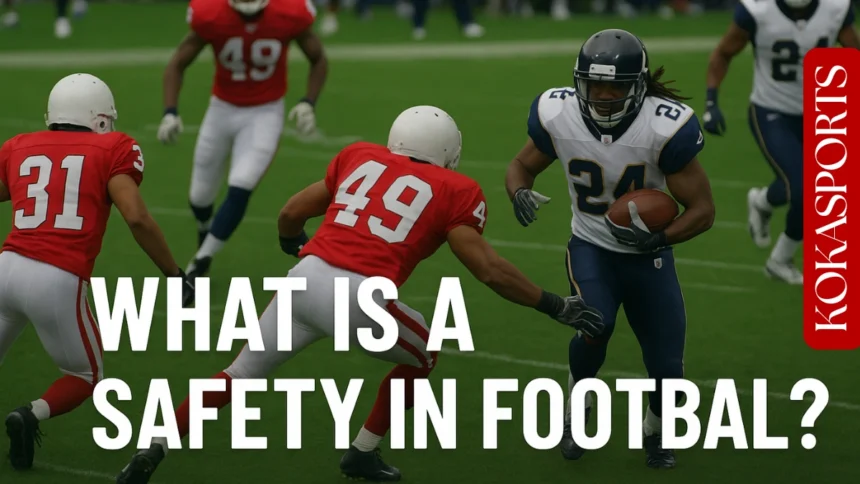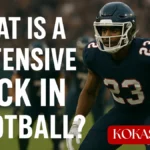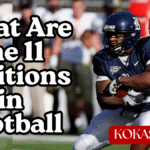Football can be confusing for new fans, especially when the same word means two completely different things. When someone asks “what is a safety in football“, they might be talking about a player position or a scoring play. Both are incredibly important in american football, and knowing them will make you a much better football fan.
This complete guide will explain everything you need to know about safety in football, from the safety position that acts as the last line of defense to the rare scoring play that awards 2 points.
The Two Meanings of Safety in Football
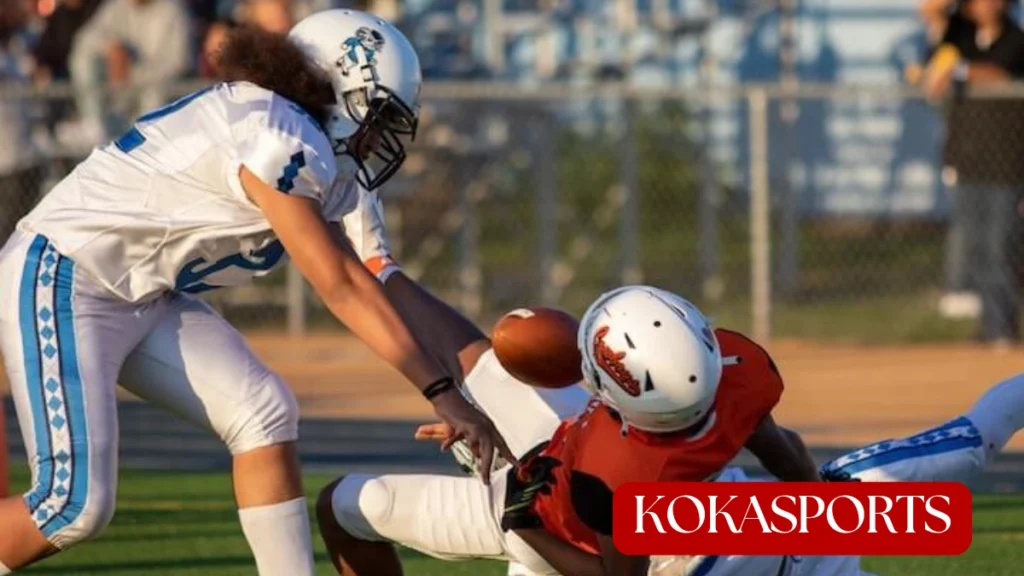
In american football, the word “safety” has two distinct meanings that often confuse new fans. First, a safety is a defensive player position specifically free safeties(fs) and strong safeties(ss) who play in the secondary. Second, a safety is a scoring play where the defensive team gets two points when the offensive player is tackled in their own end zone or commits a foul behind their own goal line.
Clearing both meanings is crucial for any coach or player who wants to learn about football. The safety position and the safety scoring play are connected because free safeties and strong safeties often help create situations that result in a safety scoring play. Professional football, college football, and high school football all use both concepts, making them essential knowledge for football fans at every level.
Read More: What is a Cornerback in Football? Guide to the CB Defensive Back Position
Key Differences at a Glance:
| Aspect | Safety Position | Safety Scoring Play |
|---|---|---|
| Definition | Defensive player who covers deep | Scoring play worth 2 points |
| Location | Secondary, middle of the field | End zone area |
| Purpose | Stop big plays, help run support | Award points for defensive success |
| Frequency | Every play has safeties | Very rare occurrence |
What is a Safety Position in Football?
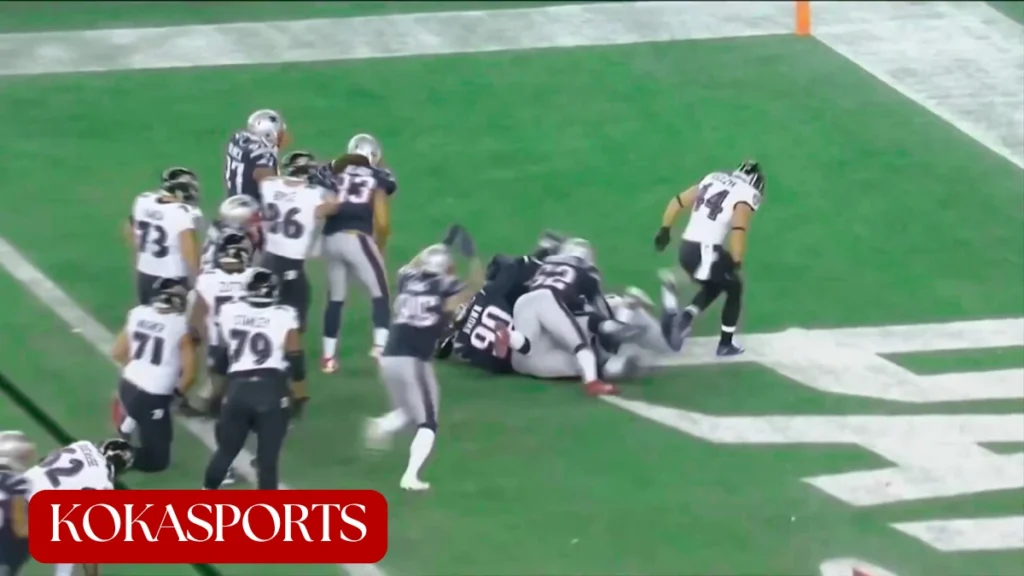
The safety position is one of the most important roles in football defense. Free safeties and strong safeties serve as the last line of defense, positioned deeper than any other defensive player. When a receiver breaks free from coverage or a ball carrier gets past the linebackers, it’s the safety who must make the tackle to prevent a touchdown.
Safety players line up approximately 10-15 yards behind the line of scrimmage, giving them a clear view of the entire field of play. This position allows them to read the quarterback’s eyes, track the ball, and react to both run play and forward pass situations. The safety is often the smartest player on the field because they need to know every offensive formation and make split-second decisions that can change the entire football game.
Free Safeties(FS) vs Strong Safeties(SS): What the Differences
Free safeties (FS) typically play on the weak side of the field (opposite the tight end) and focus primarily on pass coverage. They’re usually faster and have better ball skills because they’re responsible for covering the deep middle of the field. Free safeties(fs) must have excellent vision to track multiple receivers and anticipate where the quarterback will throw the ball.
Strong safeties(SS) line up closer to the line of scrimmage on the strong side of the field (same side as the tight end). The strong safety tends to be more physical and involved in run support. They often cover tight ends in man coverage and must be tough enough to tackle big ball carriers near the goal line. Strong safeties(SS) need to be versatile players who can cover receivers but also stop the run effectively.
Both free safeties(fs) and strong safeties(SS) must excel at several key responsibilities:
- Deep Coverage: Never let a receiver get behind them for an easy touchdown
- Run Support: Come down quickly to tackle the ball carrier on running plays
- Communication: Call out formations and adjustments to other defensive players
- Ball Skills: Create turnovers through interceptions and fumble recoveries
- Tackling: Make solid tackles in open space when they’re the last defender
Physical and Mental Traits of Great Safety Players
Elite safety players possess a unique combination of physical and mental abilities that make them successful at this demanding position. These traits helps explain why the safety position is so challenging and why great safety players are valued so highly in the NFL and college football.
Physical Requirements:
- Speed: Must be fast enough to cover receivers and chase down ball carriers
- Size: Typically 5’11” to 6’3″ and 190-220 pounds for optimal coverage and tackling
- Strength: Strong enough to tackle bigger players and shed blocks from offensive players
- Agility: Quick feet and hips to change direction and cover receivers
Mental Abilities:
- Football IQ: knowing offensive schemes and predicting plays
- Vision: Seeing the entire field and tracking multiple threats
- Instincts: Natural feel for where the ball is going and when to break on passes
- Leadership: Communicating with teammates and making defensive adjustments
The best safety players in football history combined all these traits to become game-changing players. For example, Ed Reed was known for his incredible ball skills and ability to return interceptions for touchdowns, while Troy Polamalu was famous for his instincts and ability to make big plays in crucial moments.
How Safety Scoring Works in Football

Now let’s explore the other meaning of safety in football – the scoring play. A safety occurs when the ball becomes dead in the end zone in possession of the team that put it there, or when a player is tackled behind their own goal line. This scoring play awards 2 points to the defensive team and also gives them excellent field position through a free kick.
Safety scoring is one of the rarest events in football, happening only a few times per season in professional football. However, when a safety does occur, it can completely change the momentum of a football game because it gives the defensive team both points and possession of the ball through a safety kick.
Common Ways a Safety Occurs
How a safety happens helps fans appreciate this unique scoring play. Here are the most common scenarios where a safety is awarded:
1. Quarterback Sacked in the End Zone The most frequent way to score points through a safety is when the quarterback drops back to throw the ball but gets tackled behind his own goal line. This often happens when the offensive line breaks down and the quarterback has nowhere to run.
2. Ball Carrier Tackled in the End Zone Sometimes a running back receives a handoff near his own goal line and gets tackled in their own end zone before reaching the field of play. This immediately results in two points for the defensive team.
3. Offensive Player Steps Out of Bounds If any offensive player steps out of bounds in their own end zone while holding the ball, a safety is ruled immediately. This can happen during scrambles or when players try to avoid tackles.
4. Fumbles in the End Zone When an offensive player fumbles the ball in their own end zone and the ball goes out of bounds behind the goal line, the result is a safety. The ball is dead in the end zone, creating the safety situation.
5. Penalties in the End Zone Certain penalties by the offense in their own end zone result in a safety. The most common is holding, where an offensive player commits a foul by illegally grabbing a defensive player in the end zone.
What Happens After a Safety
When a safety is scored, the game changes completely. The team that gave up the two points must do a safety kick from their own 20-yard line. This special play by a free kick gives the other team great field position to score more points quickly.
During the safety kick, teams can either punt the ball or kick the ball like a regular kickoff. The important rule is that the kicking team cannot get the ball back unless the other team touches it first. This prevents them from getting control of the ball immediately after giving up points. Usually, the receiving team gets possession around midfield, putting them in perfect position to score a touchdown.
What is a Safety in Football Strategy Works

Both the safety position and scoring a safety have huge importance in american football games. Learning about these strategies helps explain why football coaches spend so much time preparing for different safety situations.
How Defenses Use Safety Positions
Free safeties(FS) and strong safeties(SS) are the most flexible players on defense. These players must handle many different jobs, making them extremely valuable. In modern gridiron football, safeties often play closer to the line to help with stopping the run, but they must be ready to drop back quickly when teams try a pass play.
The safety position lets defenses trick the offense. Before the ball is snapped, quarterbacks look at where the safeties are standing to figure out if the defense is playing man or zone coverage. Smart free safeties(FS) and strong safeties(SS) can confuse quarterbacks by showing one thing before the snap but doing something completely different after.
How Safeties Cover the Field:
- Cover 1: The free safety usually lines up deep in the middle while strong safeties cover underneath
- Cover 2: Both safeties split the deep field in half
- Cover 3: One safety helps cover another player in one-third of the deep field
- Robber Coverage: A safety sits in passing lanes to intercept passes
How Offenses Avoid Giving Up Points
When the offense is backed up near their own endzone, they must be very careful. Teams prefer run plays because they’re less likely to result in a safety than a forward pass that goes out of the back. Professional football quarterbacks get special training for these dangerous situations.
Quarterbacks learn to throw the ball away when pressure comes instead of taking a sack in the endzone. However, they must be careful not to commit an illegal forward pass, which happens when the offense commits a foul and can result in a safety.
Smart Offensive Plays Near Own Goal:
- Quick passes to get outside the end zone
- Simple running plays to gain a few yards
- Quarterback rollouts to avoid the blitz
- Using timeouts to talk strategy
Famous Safety Stories in Football History
Throughout american football history, there have been amazing safety plays that changed entire games. These examples show how both safety positions and safety scoring can impact the biggest moments.
Top 5 Greatest Safety Players of All Time

- Ed Reed – Record-holding free safety with 64 career interceptions and unmatched ball skills
- Ronnie Lott – Most versatile and intimidating safety who dominated both cornerback and safety positions
- Troy Polamalu – Instinctive strong safety known for game-changing plays and incredible football IQ
- Paul Krause – Holds NFL record with 81 career interceptions during 16-year Hall of Fame career
- Brian Dawkins – Complete safety who excelled in coverage, run support, and pass rush with great leadership
Super Bowl Safety Moments
One of the most famous safeties happened in Super Bowl XLVIII when Seattle scored on the very first play. The ball went bounds behind the goal line when Denver’s center snapped it over the quarterback’s head. This play set the tone for Seattle’s big victory.
College Football Safety Stars
College football has produced many great safety players who went on to successful NFL careers. Players like Sean Taylor showed how the safety position can be both a coverage specialist and a physical enforcer. In high school football, young players learn about football by studying these legends and understanding how safeties serve as the last line of defense.
Training Tips for Safety Success
Players who want to excel at the safety position need specific training. The best coaches emphasize that safety players must develop both physical and mental skills to succeed at this demanding position.
Physical Training for Safeties
Speed and Movement: Safety players must stay fast all season long. This means regular sprint work and footwork drills to keep their feet quick when covering receivers or making tackles.
Strength Training: While safeties don’t need to be as big as linebackers, they must be strong enough to tackle bigger players and fight off blocks. Focus on exercises that build functional strength for football.
Tackling Skills: The safety may be the only defensive player between the ball carrier and a touchdown. Practicing proper tackling form is crucial, especially in open space situations.
Mental Training and Study
Learning Offenses: Great safety players study how offenses work. They need to recognize when teams are likely to attempt long pass plays, try a run play, or use special teams tricks.
Communication: Safety players often make defensive adjustments based on what they see. This requires clear communication and leadership skills to help teammates.
Game Awareness: Knowing the situation helps safety players predict what the offense might do next.
How Rare Safety Scoring Really Is
Safety scoring is one of the rarest things in football, which makes it exciting when it happens. Statistics show that safeties happen about once every 14 games in the NFL, making them much rarer than blocked punts and way rarer than touchdowns.
Safety Statistics by Level
| Level of Football | How Often | Most Common Way |
|---|---|---|
| NFL | 0.07 per game | QB sacked |
| College Football | 0.12 per game | Penalties |
| High School Football | 0.09 per game | Fumbles |
The rarity makes each safety special. When a safety happens, it often becomes a highlight that fans remember forever. Getting 2 points and good field position can completely change close games.
Why Safeties Change Games
Beyond the 2 points awarded, safeties give several advantages:
Momentum Change: The psychological impact can energize the defensive team and crowd while hurting the offensive team’s confidence.
Field Position: After the safety kick, teams often get the ball back near midfield, putting them in excellent position to score points again.
Time Strategy: In close football games, the combination of scoring points and getting the ball back can determine the winner.
Understanding the Rulebook
According to the official rulebook, a safety occurs when the ball becomes dead in the end zone in possession of the team that put it there, or when a player is tackled behind their own goal line. When the ball is declared dead in these situations, it becomes dead in the end zone and results in two points for the defensive team.
The most common way this happens is when an offensive player commits a foul or when the ball is out of bounds behind the goal line. Whether it’s canadian football or american football, these rules help keep the game fair and exciting for everyone who wants to learn about football.
In safety in american football, cornerbacks and other defensive players work together with safeties to create these rare but important scoring opportunities. Understanding how the ball back situation works and when a change of possession might result in a safety helps fans appreciate this unique aspect of the game.
Conclusion: Mastering Both Meanings of Safety in Football
So, what is a safety in football requires knowledge of both the player position and the scoring play. Free safeties and strong safeties serve as the last line of defense, while safety scoring plays award 2 points and can change game momentum completely. Whether you’re a coach or player or simply a football fan, mastering both meanings of safety will enhance your appreciation for the strategic depth and excitement that make football such a compelling sport at every level.
FAQs
What is a 2 point safety?
When offense is tackled in their own end zone, defense gets 2 points.
How to get 1 point safety?
Defense tackles offense in end zone during PAT attempt.
What is the difference between a safety and a touchback in football?
Safety = 2 points to defense; Touchback = ball at 25-yard line, no points.
What is the difference between a cornerback and a safety?
Cornerbacks cover receivers closely; safeties play deep as last defenders.

